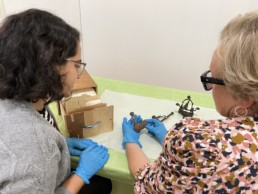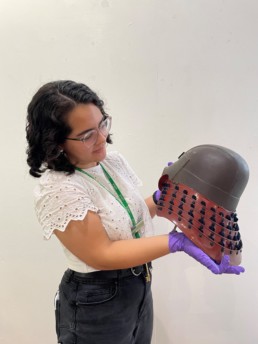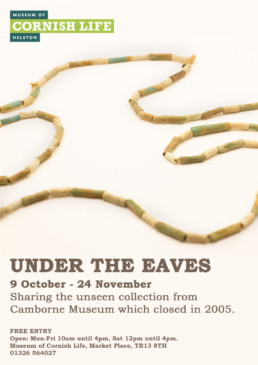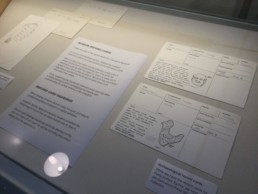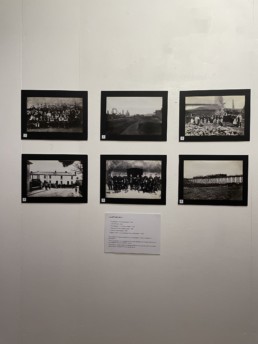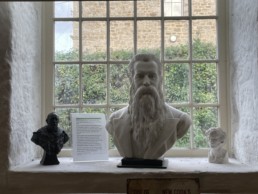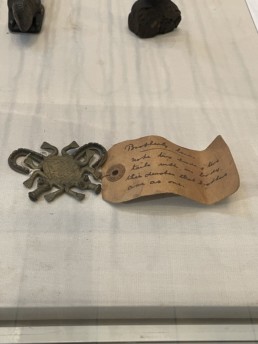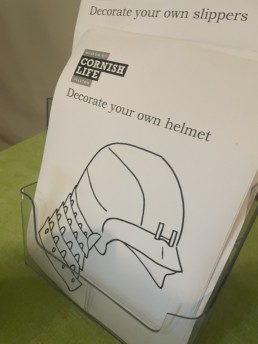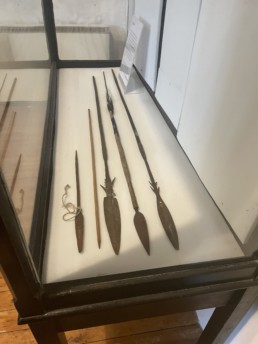UNDER THE EAVES
CURATED BY TAMSIN CHAFFIN AT THE MUSEUM OF CORNISH LIFE
‘Under The Eaves’ exhibition showcased some of the objects from Camborne Museum now held in storage at the Museum of Cornish Life. The Camborne Collection came to the museum in 2005 when Camborne Museum closed. For the first time since the transfer, this exhibition displayed some of the familiar and unfamiliar items held in this eclectic collection.
The exhibition is inspired by the ‘Under the Eaves’ research series led by Julia Webb-Harvey, uncovering objects and their stories hidden in storage under the eaves of the museum.
CURATORIAL TASK: REFLECTIVE WRITING
Reflections on Under the Eaves
When I joined the Museum of Cornish Life as Trainee Curator in January 2020 I had no prior experience with collections or exhibitions but I was keen to learn as much as possible. My ultimate goal was to produce my own exhibition and having recently opened the ‘Under the Eaves’, this traineeship has equipped and empowered me with the skills, knowledge and confidence to achieve this aim.
Background
In 2020 Julia Webb–Harvey, volunteer researcher, began the Under the Eaves project examining the Museum of Cornish Life’s collections. Inspired by her experiences as a citizen curator, as well as debates and actions in other museums around decolonisation, her research explores the hidden stories which exist collections. In blog posts Julia has covered the links between sugar nips and the transatlantic slave trade, explored how ivory in collections can have an unexpected link with disease and considered ideas of ownership looking at the museum’s Egyptian collection. I was drawn to this work. While at university I had studied how diversifying narratives in museums could bring benefits for inclusion but this academic study had mainly focused on work conducted by national museums. After reading Tehmina Goskar’s article about the role of rural museums in spearheading decolonising museum practice I was intrigued. Julia’s research seemed a perfect example of work in a rural museum engaging with hidden stories and I was keen to get involved.
Exhibition Aims
My exhibition is the consequence of conversations with Julia about her research into the Camborne Collection. While Julia’s research was published online, this exhibition was an opportunity to take inspiration from her blogs and put objects from Camborne Museum on display. These objects came to the Museum of Cornish Life in 2005 when Camborne Museum closed. While some objects were put on permanent display at that time, much of the collection was put in storage where it remained. My main aims were to draw attention to the existence of the Camborne Collection, showcase objects which have not been on display since the museum’s closure and give the visitor an idea of the research work which goes on behind the scenes. I wanted to remind (or perhaps inform) the visitor that there was a museum in Camborne and that its objects are now held in Helston, but also show that although these have not been on display they are still important for our current work.
Working with Volunteers
A key part of putting together the exhibition was presenting an exhibition proposal to volunteers at the museum. The help and feedback of volunteers was vital in shaping my thinking, and as the exhibition was scheduled to open in October I was keen to learn from the volunteers about who my audience would likely be at that time of year as this would guide the exhibition’s content and tone. Discussions following the proposal also helped to shape the scope of the exhibition, with volunteers who had worked on exhibitions before helping me to understand what was viable in the space and timeframe I had available.
Following, I was further supported by volunteers at every step of the exhibition process from planning and research to interpretation and installation. When I found myself baffled, or falling down another research rabbit–hole, conversations with Julia and talking through the tricky parts helped me immensely. While at times the magnitude of putting together an exhibition, something I had never done before, seemed overwhelming the guidance and support of the volunteer and staff team at the museum helped me to achieve more than I had before thought possible.
Narrative
In the exhibition space, I sought to guide the visitor along a narrative path. The first objects are photographs of the local area, showing social and industrial scenes from the 19th and early 20th century. This first section acts as an introduction to the museum and town. With the next cases I wanted to create a contrast between local objects, mostly relating to Camborne’s mining heritage, and objects from around the world which seem a more surprising part of the collection. The second case of these two displays some objects Julia has been researching as well as some objects which we have not yet begun to research, inviting the audience to consider what they may
be or how they may have come into the collection. The final section shows an example of typical storage box from the Camborne Collection, with its contents showing the eclectic variety of objects housed inside. Text alongside the storage box display speaks of how long research takes but also shows our commitment to continue, while a nearby display of index cards shows the problems we face in this task when records are absent or incomplete. Ultimately, by contrasting local objects with those with international links I hoped to engage the visitor’s curiosity as my own curiosity had guided me through the process.
Learning
I have learnt many lessons about planning, researching and co–ordinating a team. However, two key learnings from this exhibition have been:
• Being honest about what you do not know is difficult. Museums are sometimes thought to be repositories of knowledge knowing everything about the objects they hold and as a curator I have felt pressure to embody this. Admitting you don’t know something about an object goes against this, but is the exact situation I found myself in often with the Camborne Collection. Being open and honest about what you do not know is important as it welcomes new information from people who do know.
• Conducting work around decolonisation doesn’t have to be frightening or intimidating. Through ‘Under the Eaves’ we have been drawing light to forgotten stories and filling in the absences in the record. It can be as simple and researching and sharing the things we didn’t know before.
Conclusion
Rather than being in competition with Julia’s work, I see this exhibition as a continuation of her research. I borrowed her title as I wanted the exhibition and her work to be connected, but I used the exhibition to extend the project in a slightly different direction. The Under the Eaves exhibition is driven by the same curiosity which led Julia in her research. It is by no means the culmination of the project, but a snapshot of where we were at that point. I hope to give visitors a glimpse into what research happens behind the scenes in museums and openly and honestly share what we have found out so far.
